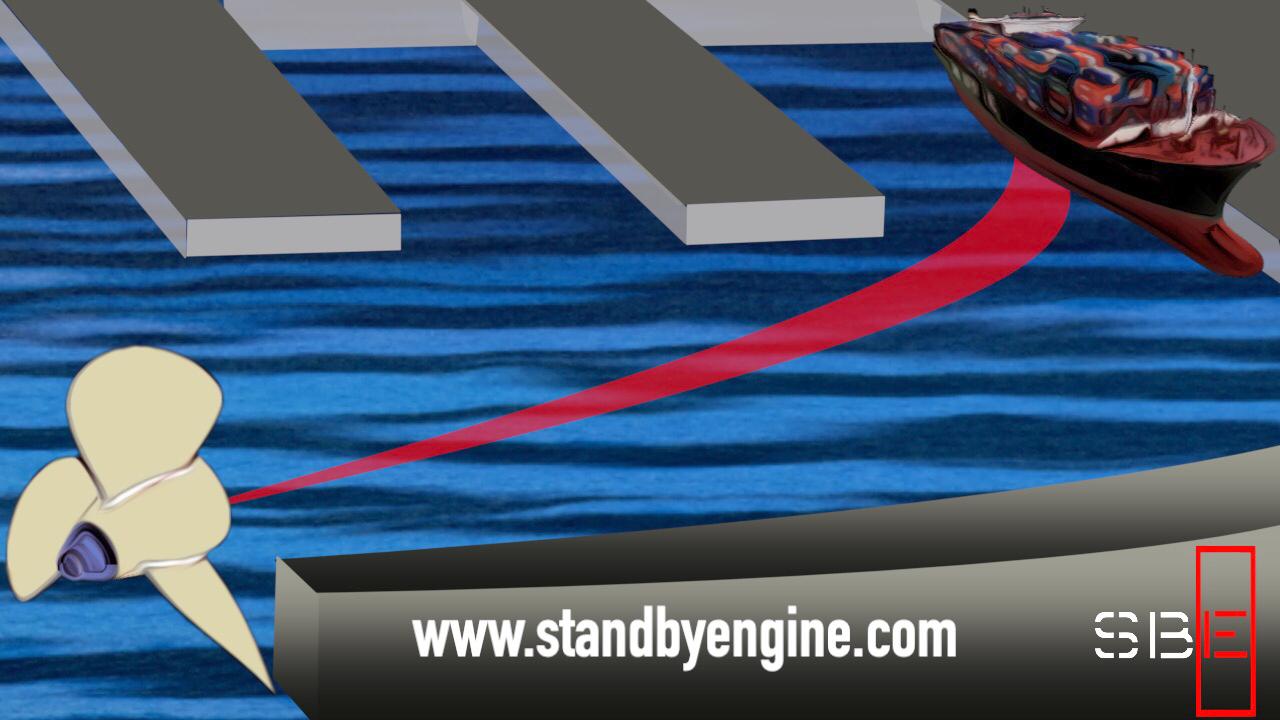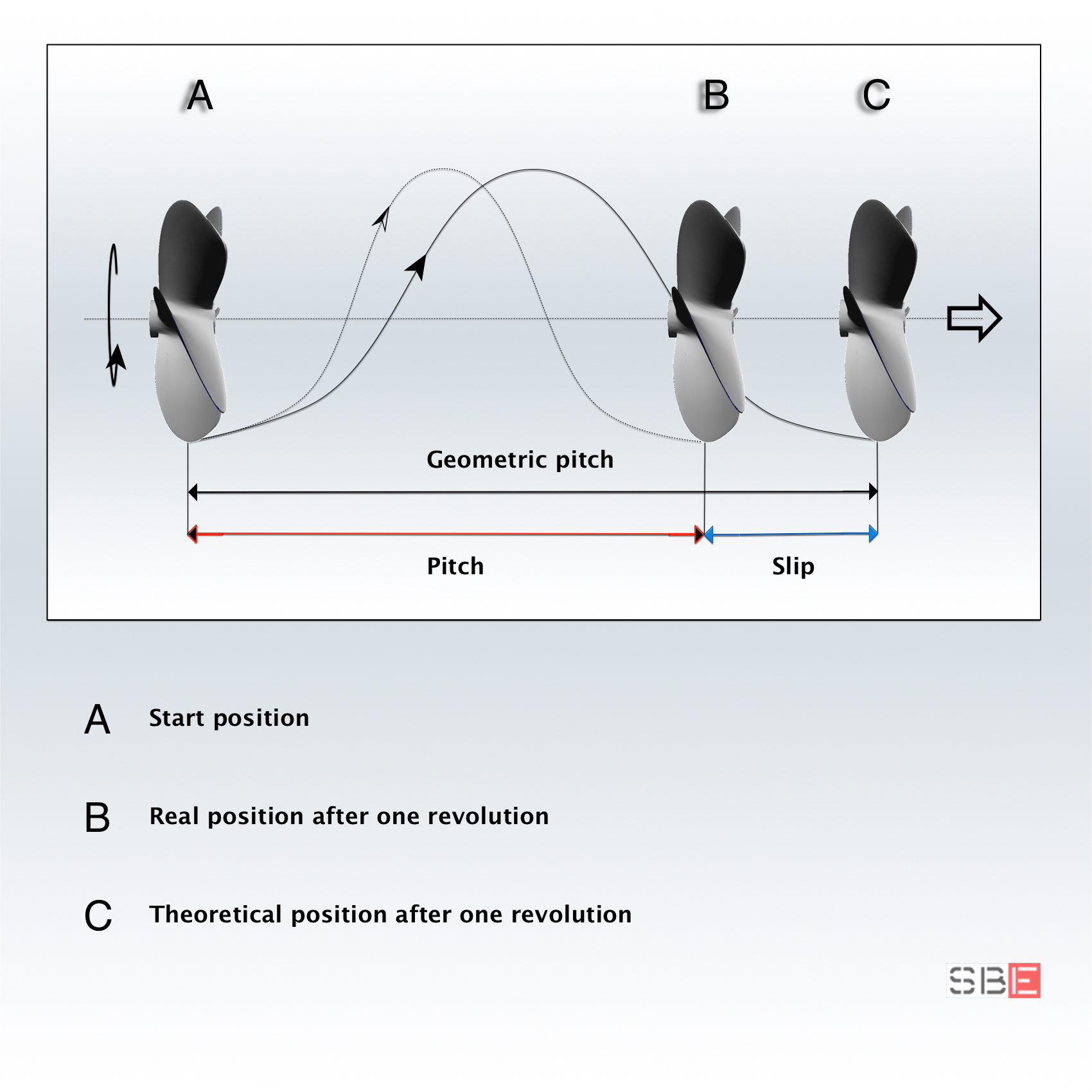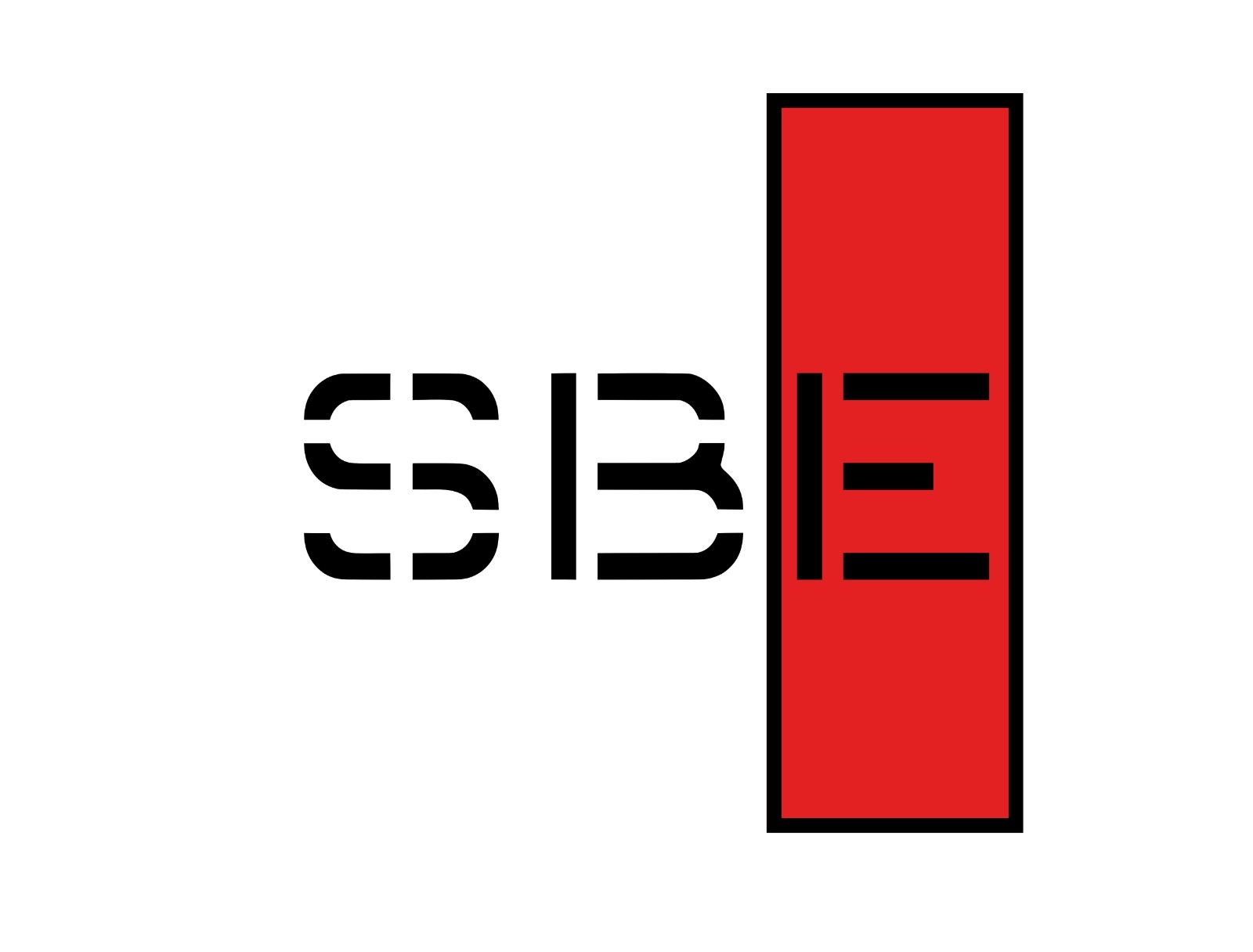
The ABCs of Maneuvers Begin with the Propellers
Thinking back over the years, I realize that, finding myself having to undergo maneuvering exams, the first topic dealt with has always concerned propellers.
Nothing complicated, even if to transfer the theory from books to thoughts and actions, the step is not the shortest!
To better understand what I mean, I will briefly mention the different characteristics between fixed pitch and variable pitch propellers, to then – with an example – fit this little information between the reasoning developed to bring a ship to the quay.
Let’s start.
The particular shape of the propeller, connected to a motor shaft, causes the latter’s rotation to transform into the ship’s movement.
We, therefore, have the propeller, which, by pushing a certain amount of water, generates a movement transmitted to the ship.
Let’s try to understand better how the process works.
The propeller pitch is the theoretical distance travelled in one complete turn of the propeller (neglecting the compliance of the fluid). It corresponds to the distance travelled if it moved inside a solid body, such as a screw in the wood.
Since the propeller moves in a yielding substance, the ship’s shifting, after one turn, will not be equal to the geometric pitch but will cover a smaller space called advance or pitch. The difference between geometric and advanced pitch is the slip.
The slip is related to the water mass speed pushed by the propeller in the opposite direction of the motion.
- If the slip were zero, there would be no current rejected by the propeller.
- When the ship moves forward from the stop position, we have the most significant slip—the least when the vessel proceeds at cruising speed.
Fix-Pitch Propellers
Fix-pitch propellers are very common because they are economically advantageous, have blades keyed to the hub, and cannot adjust their orientation.
To reverse the direction of the ship’s motion is necessary to uncouple the axis from the engine, stop the latter, restart it in the reverse order and re-couple the axis.
Controllable Pitch Propellers
When we can change the orientation of the blades utilising servomechanisms, we have the controllable pitch propellers. In other words, the propeller blades can be rotated around their longitudinal axis, thus causing a variation in the angle with which they cut through the water. To vary the speed and reverse the motion is sufficient to change the orientation of the blades concerning the hub.
They are also commonly known as a variable pitch propeller.
Good! Now let’s see, with an example, how we can transfer these important theoretical notions into a practical situation.
Imagine being on the bridge of a ship 100 meters long, with a draft of eight meters, propeller with a variable pitch with right-handed effect, without thrusters, absence of wind and current, and final mooring with starboard on the quay.
What assessments should I make based on my theoretical knowledge?
- a ship of this size, in good weather conditions, usually manoeuvres without the aid of tugs;
- eight meters of the draft is a lot: this means “heavy ship”, which, generally, retains its inertial movement for a long time;
- variable pitch propeller with right-handed effect: what does this information make us think of in this situation? First, we must pay particular attention to the speed because the variable pitch propellers do not express the same reverse power as the fixed pitch propellers. It is, therefore, a manoeuvre that, in the final phase, must be set at a minimum steering speed. We must also regulate the decrease the speed because a sudden change in pace would make me lose control.
- Right-hand and starboard side effect on the quay: very delicate situation! In the final phase, almost certainly, we will have to use the engine to stop this ship in the position which – let’s not forget – is very heavy and difficult to manage. To stop the vessel, we must use ample engine power to generate a significant right-handed effect. In a nutshell, the bow of the ship will approach decisively towards the quay and will do so with a sudden residual;
- use of the anchor: all the above dangers/problems lead to a search for a solution which, excluding the use of the tugboat, allows us to manage the manoeuvre safely. Using the left anchor for dredging can solve our problems.
What would have been the essential differences if the ship had been equipped with a fixed-pitch propeller?
In this example, everything is aimed at maximising the effects: heavy ship, without bow thruster and mooring side not conducive to the propeller effect. Given that in both conditions, it is advisable to maintain a cautious safety speed. We will have that with the fixed pace, and we will be able to afford a specific speed rate and then stop the engine, counting on maintaining (generally) reasonable control. We will correct any downturns with the rudder and appropriate “taps” of the engine. With the variable pitch, we will have to plan the decrease in speed in time because, otherwise, in order not to lose the steering, we would arrive too fast at our destination with a ship that would become difficult to manoeuvre and stop.
We will have to be careful to get close to the mooring with the minimum forward to keep the direction and with the left anchor, dredging to avoid the inevitable fall of the bow on the quay when we turn the engine astern.
We stop here.
This article is concise and not very detailed. We created it by drawing heavily on the information collected in the course dedicated to propellers. A course that we wanted to begin by studying the manoeuvre starting from the basics, with a practical eye. The ABC of the manoeuvre consists of three main topics: The propellers, rudders and anchors and a chapter dedicated to realistic manoeuvring.
The course will be followed by other dedicated chapters to cover all the essential aspects influencing ship handling.



